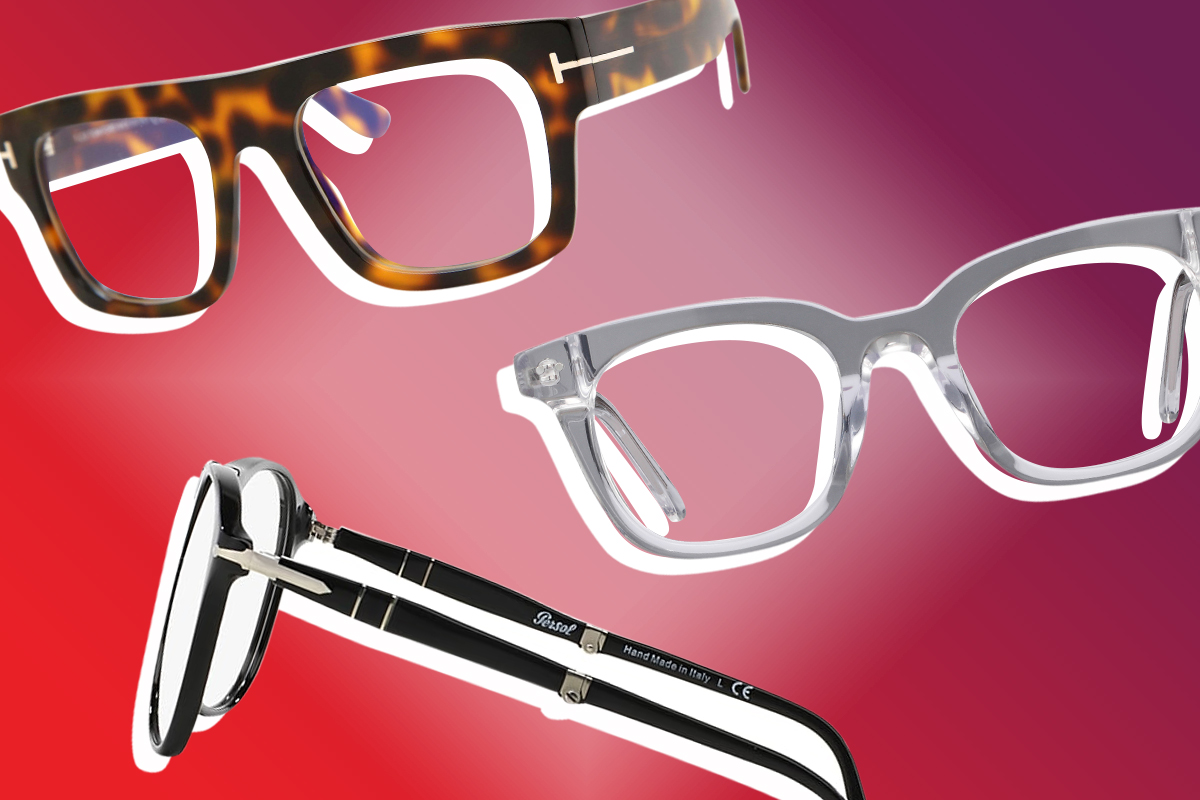
You can certainly tell the world a lot about your character just by choosing the right pair of glasses. Whether you’re looking for a neat and sophisticated look to accompany your tailored attire, or bolder, large rims to bring together a more creative ensemble, there’s a lot to consider when choosing the right pair to buy.
Back in the day, we were led to believe that anyone who wore glasses was a geek, the ugly duckling, four-eyes, the social outcast. How times have changed.
Move forward to today and you’ll come across people with perfect 20/20 vision throwing on a pair. Why? Because glasses look so darn good – whilst making you feel stylish and confident.
There are three major things to consider when purchasing your next pair of reading frames, all of which are equally important. Do they complement the shape of your face? Are they practical (nobody wants big, heavy readers)? And are they going to work with what you wear?
Think about what you wear regularly – whether it’s t-shirts, jeans, suits, business attire, casual clothing, etc. – and try to pick glasses that’ll complement your usual ensemble.
Different types of materials used to make glasses
Reading glasses are constructed from a range of materials that depend on the designer’s intended audience, budget, and the anticipated lifestyle of the wearer. Plastic and metal are the most common, but hybrid and natural alternatives are growing in the market.
Acetate Frames
Although acetate is a form of plastic, its omnipresence in eyewear warrants an entry of its own. Acetate is derived from renewable cotton and wood semi-synthetics. Although the process depends on the designer, acetate is usually created by reforming the plastic (through heat or compression) into moulded blocks, then laminating it into sheets that are then hand-cut into frames. Acetate offers a number of benefits to opticians.
They are generally more flexible and can be crafted into different shapes. Acetate frames and stems can be coloured efficiently, which doesn’t corrode with time or sun exposure. Acetate is also hypoallergenic, helping you save face (literally) from the potential embarrassment of a nasty reaction to the frame materials. They might be pricier than other plastics, but they’re universal for damn good reasons.
Plastic Frames
The everyman of eyewear. Plastic frames – made from TR-90, polymer, and other synthetics, are exploding in popularity. These are usually (but not always) created through an injection moulding process. This involves heating the plastic into a liquefied solution, then pouring the plastic into a predetermined set to construct the frame.
This process is quick as lightning and cheaply facilitates mass production. Unlike acetate frames, plastics are sprayed or painted and thus lose their colour easily, especially with robust wear. However, they are favoured for everyday wear as they are lighter than other frames and don’t obliterate any of your spendings account in the process. Plastics are overtaking metal frames on the market for these reasons and their market share has adjusted accordingly.
Metal Frames
Many metal frames are flexible and easily adjustable (such as flexon memory metal and beryllium) and can be combined with acetate to conform to the shape of the wearer’s head. Metal frames also resist corrosion and maintain their colour better than plastic.
They are, however, more expensive than mass-produced cellulose frames, and can pose an allergy risk to susceptible wearers.
Wood Frames
A recent (and trendy) entry on the market, wooden frames sit outside the normal hierarchy of eyewear. Wood frames are lightweight, flattering on most complexions, and ethically sourced. Bamboo frames, for example, don’t require the use of environmentally corrosive products such as plastic or petroleum derivatives, making them an eco-friendly option. Brands that offer these frames also like to remind customers that bamboo is bio-degradable and regenerates quite easily.
Therefore, for environmentally-conscious shoppers, they’re an excellent alternative that is becoming a solid competitor to acetate and metal frames. They can even be lighter than featherweight plastic frames, making them a solid choice for prolonged wear. They are, however, delicate and don’t tolerate the punishment you can subject to metal eyewear to (so don’t sit on them or drop them).
Tortoiseshell Frames
Tortoiseshell frames are advertised everywhere, but there’s more to them than meets the eye. Today, brand descriptions refer to the colour – not the construction itself. Today, ‘Tortoiseshell’ frames are no longer constructed from real tortoiseshells, due to obvious ethical implications. After a prolonged uproar, they’re now made from acetate or other plastic derivatives.
Designers modify the stem and frames through various processes to achieve the artful discolouration and thus replicate the unique patina that made tortoiseshell frames iconic. This provides wearers with the timeless cool of a vintage tortoiseshell frame, without harming innocent sea creatures. Win-win.
Hybrid Frames
As technology rockets towards the future, hybrid frames are taking off. In an attempt to distinguish their collections from the humdrum of mass production, brands are now offering cutting-edge frames from proprietary materials – often blends of plastic, metal, and rubber. However, hybrid frames aren’t for budget shoppers. Due to the manufacturing process and cost of materials, they are usually featured in specialist or luxury collections and might discourage the everyday guy from purchasing them.
Ask yourself if metal or acetate can’t do the job before walking into the optometrist without a decent monetary cushion in your back pocket.
You May Also Like:
Composition aside, there are a few key styles that never truly leave the market. Your environment and facial structure will, to some extent, determine which style works for you.
With a whole range of different constructions, materials, and price ranges on the market, we’ve rounded up which brands and online retailers offer the best prescription and reading glasses for men that are guaranteed to elevate your style.The post 14 Best Eyeglasses For Men In 2022 appeared first on DMARGE.
0 Commentaires